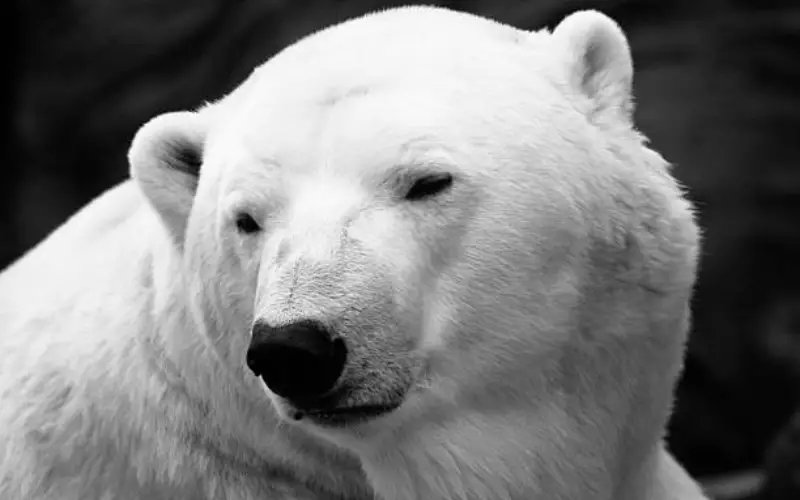Polar bears are different from any other bears you see around you and this is because they are white and they live in the arctic circle.
But even more interesting, why do polar bears have small ears and tails? Many individuals have asked this question, and the answer is straightforward. They use their small ears and tail to keep themselves warm.
This article explains how exactly this animal makes this warmth mechanism possible. We also cover all you need to know about this animal and some fun facts about them.
All About Polar Bears
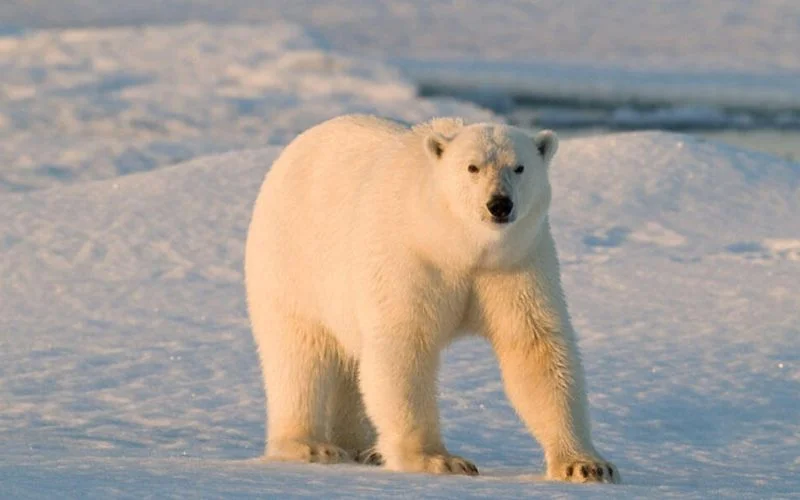
Polar bears are exciting animals and are different from the usual grizzly bear you may know. Here are some essential details about this animal you need to know.
Habitat
These can be sound in the arctic circle (North Pole), extending as far as the James Bay area in Canada. Because there is hardly any human population in this area, they occupy the entire range.
They spend most of their time on sea ice, and this sea ice is available based on the annual weather. They tend to migrate to areas with more sea ice. They are scientifically known as maritime bears as they spend most of their time on sea ice.
Hunting and feeding
Polar bears are hypercarnivores, meaning that 70% of their diet is from meat sourced by predation and scavenging.
The hunting method used by most polar bears is known as still-hunting. It is when they use their sense of smell to locate a seal hole and wait for it to appear.
When a seal exhales from its hole, the bear pulls it out using its paw. It then bites the head of the seal and crushes its head before properly feeding on it.
Older polar bears will feed on the blubbers of seals but occasionally eat meat. When there is no prey available, they eat berries and seaweed.
Breeding
Mating is done between April and May, and the female polar bear eats a lot of food in the following months to gain enough body fat. The cubs are born between November and February in a den where they survive off the fat reserve of their mother.
Why do polar bears have small ears and tails?
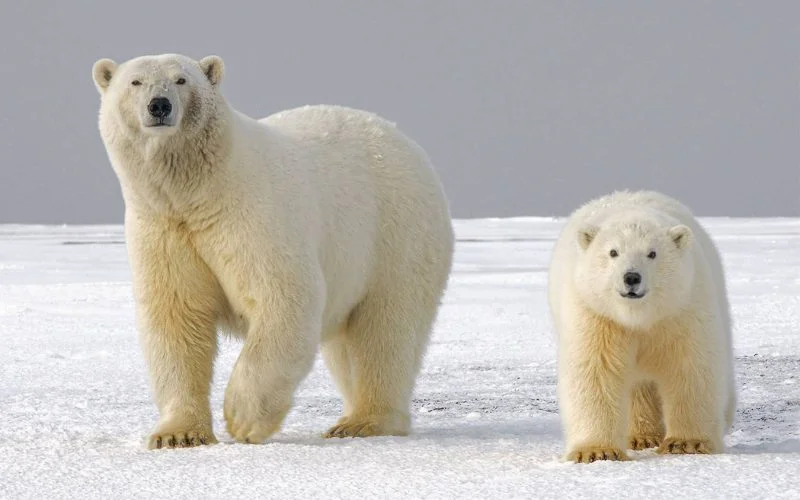
Ever wonder how polar bears are to survive the cold at the North pole? Well, they have characteristics or adaptations that help them survive low temperatures. Their small ears and tails have small surface areas that help prevent heat loss and conserve the warmth they need.
Other adaptations for extreme cold
Small ears and tails are insufficient to make polar bears survive in frigid locations. They need other adaptations as well.
Layered Fur
To completely prevent heat loss, polar bears have two layers of fur. These layers are so thick that male polar bears are known to overheat when running.
This animal is more likely to overheat during vigorous activities because they are known to be the largest land-based carnivore as the adult males can weigh almost up to 700kg. All these are also adaptations, as large animals are less likely to lose body heat.
Thick fat padding
Below their fur, they have an even thicker layer of fat that helps prevent heat loss. These layers become very useful when polar bears are in the water, as they depend on them to keep them warm.
Their layer of fat can be as thick as 10cm (4 inches), and while they rely on their furs to keep them warm most of the time, the fat padding does some work, keeping them insulated.
Specialized paws
The paws of polar bears are large and can measure up to 11.81 inches across. The paws help them move properly on thin ice and swim well.
Papillae cover the footpads of their paws and help them get a grip on the ice to keep them from slipping, and the fur between their toes keeps them warm as it prevents heat loss in that area. The claws of polar bears are also adapted for catching prey and getting a good grip on ice.
Fun facts about polar bears
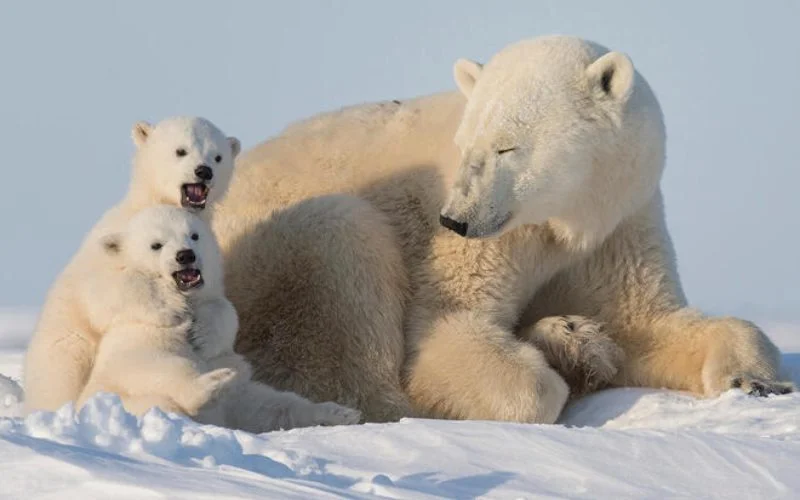
Polar bears are exciting animals. Hence, there is much to learn about them. Here are some fun and interesting facts about this animal.
- Polar bears and penguins don’t meet. Penguins are at the South pole while Polar bears are at the North Pole.
- The skin of a polar bear is black. It only appears white because it reflects light
- Only a few of their hunts turn out successful
- A male polar bear can weigh as much as ten men put together
- Aside from climate change, polar bears face threats from oil spills, contact with toxic chemicals, and predation by humans
- They can detect their prey up to a kilometer away
Threats faced by polar bears
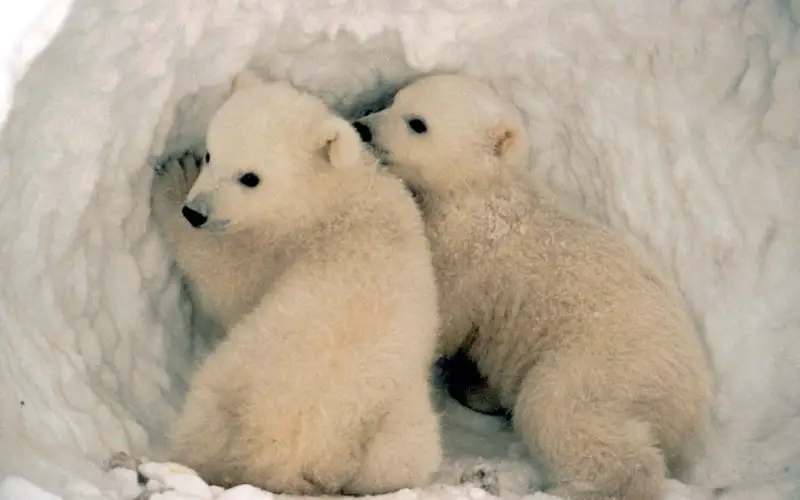
Because of the high extinction rates of animals in the arctic circle, polar bears have been labeled as a vulnerable specie. Here are some of the significant issues that threaten the existence of this animal.
Climate change
It involves the shift in the global weather pattern. It affects the habitat of polar bears as it has been reported that it has caused sea ice to melt, forcing these animals to migrate from their initial home to new locations.
Losing their habitat will also result in limited food sources as they hunt seals from sea ice. It also prevents pregnant polar bears from building dens for raising their cubs.
Pollution
When polar bears feed on plant and animal products contaminated with pesticides, their health is affected negatively. The chemical contained in pesticides causes birth defects and a deficiency in their immune system.
Oil spills
Oil and gas development in the arctic region can harm polar bears. That is because the oil reduces the insulative property of the fur on polar bears, and since these animals rely on their fur as their primary source of warmth, they can be affected by the low temperature.
Conclusion
Polar bears are unique animals known for their differences from grizzly bears. If you have been wondering why these animals have small ears and tails, then this article should have given you the answer, they need small ears and tails to keep themselves warm.
You May Also Like:
- Can I Shoot a Possum in My Backyard
- How Far Can Raccoons Jump
- What Sorts of Food Does Backyard Lizard Eat?
- Can You Eat Squirrel From Your Backyard
- Do Skunks Climb Trees or Fences?
We have also provided all the relevant details about polar bears and the characteristics that help them survive in their cold environment. Read also Do Bears Have Tails? (Fun Facts About Bears)
Reading further, you will learn some fantastic facts about polar bears and the threats they face that make them labeled as vulnerable.
Kindly reach out to people by sharing this post on social media.
If you liked this article, then please follow us on Facebook, Instagram, and Pinterest.

